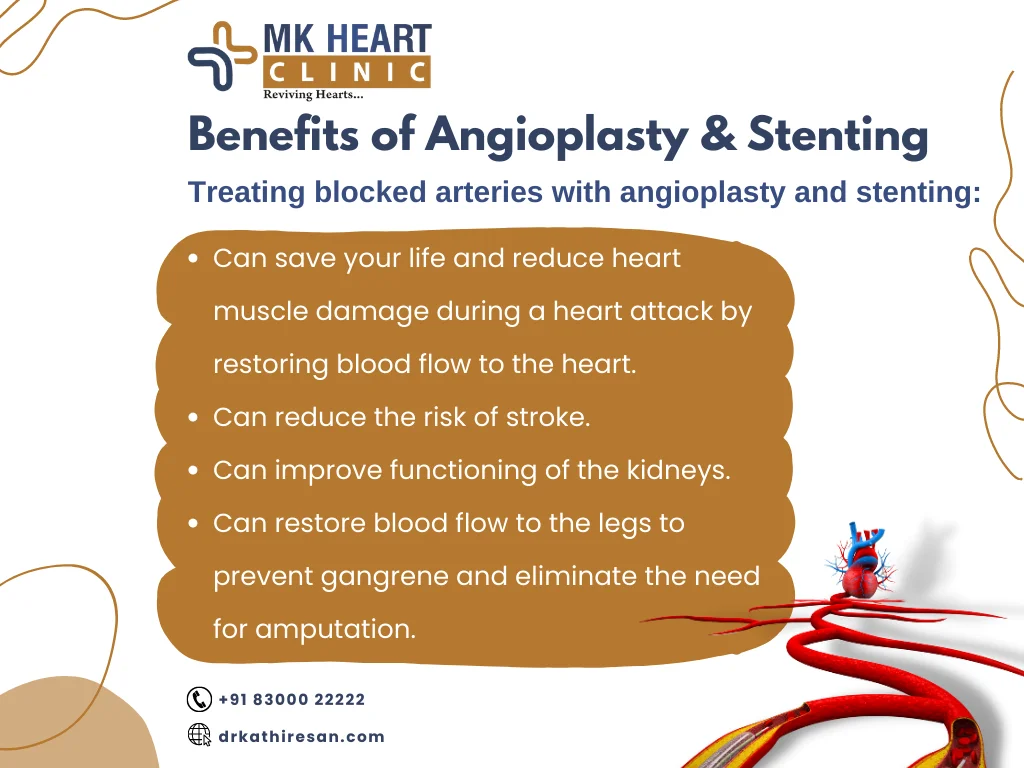Angioplasty is a surgical procedure to help patients restore blood flow through their arteries. Certain conditions may lead to a slow blood flow, making it difficult for the patient to receive the necessary oxygen and nutrients. The Percutaneous Transluminal Coronary Angioplasty surgery opens up the blocked artery where blood can flow smoothly.
What is PTCA?
Percutaneous Transluminal Coronary Angioplasty (PTCA) is a minimally invasive surgical procedure that is performed to open blocked coronary arteries caused by coronary artery disease (CAD). This type of angioplasty surgery is performed by the doctor to help the patients restore arterial blood flow to the heart tissue or heart muscle without making them perform open-heart Surgery.
Types of Percutaneous Transluminal Coronary Angioplasty
6 types of Percutaneous Transluminal Coronary Angioplasty (PTCA) include:
- Balloon Angioplasty – In this PTCA procedure, a specially designed catheter with a tiny balloon is guided carefully through the artery to the blockage, then it is inflated to wide open and increase blood flow to the heart. An angioplasty stent is often placed during this procedure, to keep the artery open after which the balloon is deflated and removed.
- Coronary Artery Stent – During this angioplasty stent procedure, a tiny coil is expanded inside the blocked arteries to enable it to open the blocked area and is left in place for keeping the arteries open.
- Cerebral Angioplasty – It is similar to a cardiology procedure that is used to open partially blocked vertebral, carotid arteries in the neck and, blood vessels within the brain. Angioplasty stenting of carotid/vertebral arteries and large cerebral veins usually involves using a fine, tubular wire mesh to hold the vessel open.
- Laser Angioplasty – On the other hand, a laser Percutaneous Transluminal Coronary Angioplasty is used to vaporize the blockage in the artery.
- Percutaneous Transluminal Angioplasty (PTA) of the Femoral Artery – This is a newer, minimally invasive procedure that is used to open the blocked or narrowed femoral artery and restore arterial blood flow to the lower leg without including an open vascular surgery.
- Carotid Angioplasty with Stenting – In this procedure, a very small hollow tube/ catheter is advanced from a blood vessel in the groin to the carotid arteries. Once the catheter is placed, a balloon might be inflated to open the artery and a stent is placed to hold the artery open.

When is the PTCA Performed?
Your physician will decide the suitable treatment for your CAD based on your individual circumstances. Some of the reasons why your doctor recommends a PTA include:
If you have coronary artery disease (CAD) which is caused by atherosclerosis, the patient will be advised by the doctor to undergo Percutaneous Transluminal Coronary Angioplasty (PTCA). Atherosclerosis is a condition in which the walls of the coronary arteries develop deposits of fatty compounds, cholesterol, calcium, and fibrin (a blood-clotting material). As the blockage worsens, the supply of blood to the heart slows, resulting in angina pectoris.
If a medication taken by the patient reduces the blood clots forming at the site of blockages, and if it does not seem practical to clear the blocked arteries, then your doctor will advise you to have this type of angioplasty surgery to remove the blockages and lower the patient’s risk of having a heart attack.
In some cases, the doctor will evaluate the extent of the narrowing of the arteries, the number of arteries affected, their location, the risk of a heart attack along with personal health concerns and may recommend a Percutaneous Transluminal Coronary Angioplasty (PTCA) or coronary bypass surgery depending on the level of arterial blockages.
How Percutaneous Transluminal Coronary Angioplasty (PTCA) is Performed?
During the PTCA procedure, a balloon catheter is used to guide the exact site of the blockage. It is then inflated slowly with a pump filled with dye, which lets your doctor view the artery on a special monitor screen. Then it is extended frequently for 30 to 60 seconds each time until the blockage is opened.
The patient will feel some sort of discomfort during this Percutaneous Transluminal Coronary Angioplasty and when the balloon is taken out, pictures are made to ensure the blood is flowing smoothly. If not, the doctor will make use of the balloon again. Then, a small tube called a sheath will be kept in the artery, connected to a monitoring system, after the entire surgical procedure gets completed. This is to make sure the blood flows smoothly.
Is a stent a PTCA?
Yes, a stent can be part of a percutaneous transluminal coronary angioplasty (PTCA) procedure. PTCA is a non-surgical procedure used to treat narrowed or blocked coronary arteries. During PTCA, a catheter with a deflated balloon is inserted into the narrowed artery, and the balloon is inflated to widen the artery. In many cases, a stent (a small mesh tube) is then placed in the treated area to help keep the artery open. Stents can be bare-metal or drug-eluting, and they provide structural support to maintain improved blood flow.
Conclusion
Thus, when fatty deposits build up in your blood vessels, it reduces the blood flow and, sometimes blood flow gets completely blocked. If left untreated it can break off, form clots, and cause a stroke or a heart attack.
Percutaneous Transluminal Coronary Angioplasty can open blocked arteries and reduce these risks. The experts at MK Heart Clinic in Chennai frequently recommend PTCA to treat acute heart problems as it is generally a safe procedure, although arteries get blocked again, and there can also be a small risk of significant complications in rare cases.


